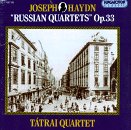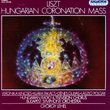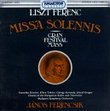| All Artists: Franz Joseph Haydn, Tátrai Quartet Title: Haydn: "Russian Quartets," Op. 33 Members Wishing: 1 Total Copies: 0 Label: Hungaroton Release Date: 1/20/1993 Album Type: Import Genre: Classical Styles: Chamber Music, Historical Periods, Classical (c.1770-1830) Number of Discs: 2 SwapaCD Credits: 2 UPCs: 182478047029, 750582147425, 5991811188726 |
Search - Franz Joseph Haydn, Tátrai Quartet :: Haydn: "Russian Quartets," Op. 33
 | Franz Joseph Haydn, Tátrai Quartet Haydn: "Russian Quartets," Op. 33 Genre: Classical
The natural, unforced quality that characterizes the playing of the Tatrai Quartet comes as a welcome reprieve from the supercharged intensity of many younger (and not much younger) groups. The Hungarians address the Opu... more » |
Larger Image |
CD Details
Synopsis
Amazon.com
The natural, unforced quality that characterizes the playing of the Tatrai Quartet comes as a welcome reprieve from the supercharged intensity of many younger (and not much younger) groups. The Hungarians address the Opus 33 quartets with a sense of long familiarity, yet their accounts are in no sense routine. The effortless gathering of the lines at cadences, the dovetailing of voices and transparency of texture, and the complete absence of excessive rhetoric make for elegant, warmly persuasive readings. If one could distill the essence of classicism, it would come out sounding much like this. The recorded sound, however, is typical Eastern bloc--somewhat better than radio quality but still slightly blanched at the top. --Ted Libbey

 Track Listings (12) - Disc #1
Track Listings (12) - Disc #1

